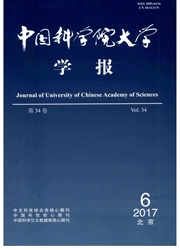

 中文摘要:
中文摘要:
利用分解袋法,研究了小叶章枯落物在不同水位梯度上的分解动态和硫素释放情况,结果表明:在450d的分解试验中,小叶章枯落物在不同水位梯度上具有相同的分解模式,均为快-慢交替变化的模式,干物质残留率沿着水位梯度从洼地边沿到中心呈逐渐减少的趋势,分解速率表现为逐渐增大,水分条件是影响小叶章枯落物分解的一个重要因素.在不同的水位梯度上枯落物中硫的浓度呈波动性变化,这种变化和干物质损失率呈线性相关,分解450d后,枯落物残体中总硫浓度沿着水位梯度从洼地边沿到中心依次为:0.588g·kg^-1、0.508g·kg^-1、0.404g·kg^-1、0.359g·kg^-1和0.306g·kg^-1,均低于初始浓度,且沿着洼地边沿向中心依次降低.S的释放模式为淋溶-固持-释放,其中枯落物残体中C/S是决定其释放模式的主要因素,当C/S高于1620.34—2430.81时,外源硫被固持,当C/S低于805.17—1070.47时,枯落物中的硫被释放,但硫的固持量或释放量受水分条件的制约,沿着水位梯度由无积水到常年积水区即由小叶章湿草旬到漂筏苔草沼泽.硫的固持量依次增加.释放量逐渐减少.
 英文摘要:
英文摘要:
Based on the litter bags' method, the dynamics of decomposition and sulfur release from Deyeuxia angustifolia litter along a water level gradient were studied for 450d in Sanjiang Plain. The result showed that the decomposition mode of Deyeuxia angustifolia litter along the water gradient were all the alternative changes of fast- slow; the mass remaining rate along the water level gradient from the edge to the center of the dishing billabong decreased and their corresponding decomposition rates increased along the water gradient, so water conditions were the important factors affecting the decomposition of the Deyeuxia angustifolia litter. The concentrations of sulfur in litters all showed fluctuant changes in all study areas during 450d and had linear relationship with dry matter mass loss. Along the water level gradient from the edge to the center of the dishing billabong, the concentrations of sulfur after 450d decomposition were 0.588g · kg^-1 , 0.508g · kg^-1, 0.404g· kg^-1 , 0.359g· kg^-1 and 0.306g· kg^-1respectively, smaller than its initial concentration. The released patterns of sulfur for the Deyeuxia angustifolia litter along different water table gradient were all leaching-immobilization-release, which were regulated by the C to S ratios in the remaining matter of litter, and exogenous sulfur were immobilized when the C to S ratios were higher than 1620.34- 2430.81, while sulfur of the litter were released when C to S ratios lower than 805.17 - 1070.4, whereas the quantities of sulfur in immobilization or release were affected by the water condition, and the quantities of sulfur in immobilization declined along water level gradient from the B to F, while the quantities of sulfur release increased.
 同期刊论文项目
同期刊论文项目
 同项目期刊论文
同项目期刊论文
 期刊信息
期刊信息
